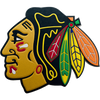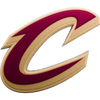Get Chicago Sports
Compare Plans
Connect TV Provider
Access With Your TV Credentials

Game starts at 11:00 PM
 Blackhawks
Blackhawks Bruins
BruinsGame starts at 11:00 PM
 Blackhawks
Blackhawks Bruins
Bruins
Game starts at 11:00 PM
 Cavaliers
Cavaliers Bulls
BullsGame starts at 11:00 PM
 Blackhawks
Blackhawks Bruins
Bruins
Game starts at 11:00 PM
Game starts at 11:00 PM
 Blackhawks
Blackhawks Bruins
Bruins
Game starts at 11:00 PM
Game starts at 11:00 PM
 Blackhawks
Blackhawks Bruins
Bruins
Game starts at 11:00 PM
Game starts at 11:00 PM
 Blackhawks
Blackhawks Bruins
Bruins
Game starts at 11:00 PM
Game starts at 11:00 PM
 Blackhawks
Blackhawks Bruins
Bruins
Game starts at 11:00 PM
Game starts at 11:00 PM
 Blackhawks
Blackhawks Bruins
Bruins
Game starts at 11:00 PM
Game starts at 11:00 PM
 Blackhawks
Blackhawks Bruins
Bruins
Game starts at 11:00 PM
Game starts at 11:00 PM
 Blackhawks
Blackhawks Bruins
Bruins
Game starts at 11:00 PM
Game starts at 11:00 PM
 Blackhawks
Blackhawks Bruins
BruinsFull Schedule
10/9
11:00 pm
CHSN
10/10
12:00 am
CHSN+
10/11
9:30 pm
CHSN
10/12
11:00 pm
CHSN
10/14
12:30 am
CHSN
10/15
1:00 am
CHSN
10/17
12:00 am
CHSN
10/18
12:30 am
CHSN
10/19
11:00 pm
CHSN
10/23
12:00 am
CHSN
10/25
11:00 pm
CHSN
10/26
11:00 pm
CHSN
10/28
12:00 am
CHSN
10/29
12:45 am
CHSN
10/30
12:00 am
CHSN
10/31
12:00 am
CHSN
11/1
12:00 am
CHSN
11/2
2:00 am
CHSN
11/3
12:00 am
CHSN
11/4
3:00 am
CHSN
11/5
1:00 am
CHSN
11/6
3:00 am
CHSN
11/8
1:00 am
CHSN
11/8
2:00 am
CHSN+
11/9
1:00 am
CHSN
11/9
6:00 pm
CHSN
11/11
1:00 am
CHSN
11/13
12:00 am
CHSN
11/16
12:00 am
CHSN
11/17
1:00 am
CHSN
11/18
2:00 am
CHSN
11/19
1:30 am
CHSN
11/20
3:00 am
CHSN
11/21
1:00 am
CHSN
11/22
12:00 am
CHSN
11/22
1:00 am
CHSN+
11/23
1:00 am
CHSN
11/24
12:00 am
CHSN
11/25
1:00 am
CHSN
11/29
12:30 am
CHSN+
11/29
1:00 am
CHSN
11/30
12:30 am
CHSN
11/30
8:30 pm
CHSN
12/4
1:00 am
CHSN
12/6
1:00 am
CHSN
12/7
2:00 am
CHSN
12/8
12:00 am
CHSN
12/8
1:00 am
CHSN+
12/14
1:00 am
CHSN
